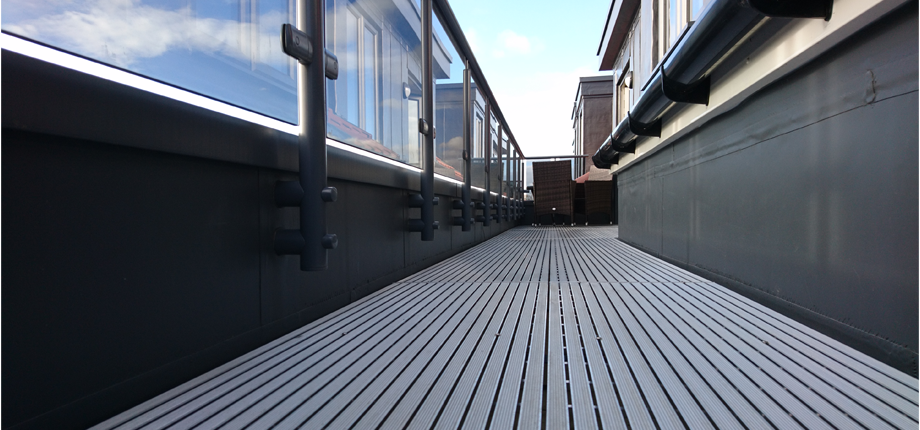Following the Grenfell disaster and the West Hampstead balcony fires, it was only a matter of time before safety concerns gave rise to statutory measures and those changes arrived in December 2018. Will Forbes, Technical Project Lead at balcony specialist Neaco, explains their impact on design and specification.

The Building (Amendment) Regulations SI 2018/1230 ban the use of combustible materials in external wall systems and balconies. From now on, developments must use materials that are A2-s1, d0 rated or Class A1 under the European classification (Euroclass) system. The new regulations prohibit other routes to compliance that were previously acceptable, so Euroclass has now become the definitive reference.
The ban applies to buildings which have a floor above 18 metres from the ground and are used for residential purposes, including student accommodation, registered care premises, hospitals and dormitories in boarding schools. The new regulations are not retrospective - they only apply to new build construction, replacement materials within a refurbishment and projects in which an existing building’s use is being changed to one of the relevant building types (for example an office block converted into apartments).
The government has published an impact assessment outlining the implications of the ban, including projected costs involved. From a specification perspective, the new regulations provide greater clarity and a more straightforward route to compliance. In terms of balcony specification, one of the most obvious implications is a narrowing of options for decking and flooring materials. A number of materials with elements of wood, including composite decking products, were previously compliant but are no longer permissible as they are not A2-s1, d0 rated or class A1 under the Euroclass system.
Certain materials containing only a very small amount of organic compounds (e.g. concrete, steel, stone and ceramics) are deemed to satisfy the requirements of class A1 without testing. The highest possible European class for fire retardant wood products is class B. With its A1 rating, aluminium is an obvious choice for balcony flooring. It combines fireproof performance with a wide range of other benefits, including a recognised design life of at least 60-100 years. It’s maintenance-free, corrosive-free and 100% recyclable.
Aluminium is also lightweight (1/3 of the weight of steel) yet high in load-bearing capacity. This means it requires less supporting steelwork than other materials, thereby significantly reducing costs. Slip resistance is another area of safety in which aluminium can excel. It’s a versatile metal that can be easily machined to provide bespoke dimensions. This is invaluable in the hands of a company with technical expertise and advanced manufacturing facilities which can engineer systems with a very finely-grooved surface, specifically developed to provide anti-slip performance in the direction of travel.
Even before the new regulations, aluminium was an increasingly popular choice due to these multiple advantages. Now that the new law has come into effect, this versatile metal is likely to experience a huge surge in demand and it could become established as the number one choice of material for balcony decking and flooring. In recent years Neaco has experienced a sharp increase in orders for our aluminium decking, which we usually supply as part of all-in-one solutions including balcony balustrades with handrails and toughened glass panels.
The regulations will clearly have a major impact on the Housing Association sector over the coming years as stakeholders come to terms with the necessary adjustment in their building maintenance and development plans. Many Housing Associations are rightly seeking assurances from manufacturers regarding the classification of their balconies and suppliers must be ready to demonstrate their compliance or risk missing out on specifications.
www.neaco.co.uk
- Log in to post comments













